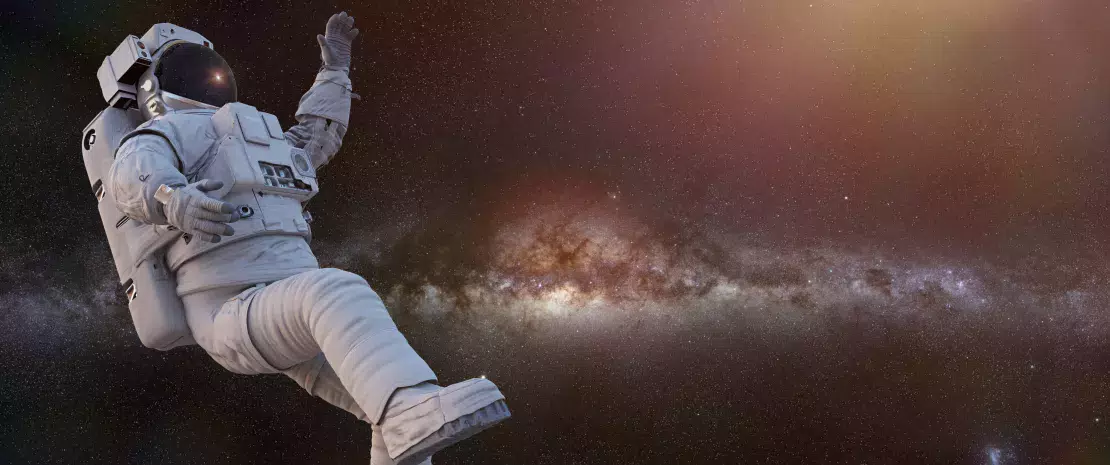Microgravity, microbiota, and bone density
Loss of bone density is a well-known side-effect of microgravity for astronauts. According to a recent study on mice published in the journal Cell Reports, the microbiota may be able to counteract it.
Sources
This article is based on scientific information

About this article
Though not as high-profile as space dog Laika, astronaut mice have taken part in a major Nasa research program.
The aim was to evaluate the effects of microgravity on bone homeostasis, with the ultimate goal of finding ways to mitigate the consequences of extended space travel. Spaceflight is associated with altered bone formation and increased bone resorption.
Recent studies have established a link between changes in the gut microbiota and bone diseases such as osteoporosis via effects on the immune system, endocrine regulation, vitamin and nutrient deficiencies, and energy metabolism through short-chain fatty acids (SCFAs). To better understand the mechanisms involved in bone health, the Rodent Research 5 mission assessed the influence of microgravity on the gut and oral microbiota of 20 female mice that spent 4.5 weeks (10 rodents) or 9 weeks (10 rodents) in the International Space Station (ISS). This is the equivalent of several years in space for Neil Armstrong, since human life expectancy is 30 to 40 times longer than that of these small rodents.
Worldwide, osteoporosis causes more than 8.9 million fractures annually, resulting in an osteoporotic fracture every 3 seconds.
Effects of extended space travel
After 4.5 weeks in space, the rodents’ microbiota remained broadly similar in terms of diversity to that of 20 control rodents who stayed behind on Earth under identical conditions, except for microgravity. However, a more prolonged stay in the ISS (9 weeks) saw increased gut microbiota diversity, with a higher relative abundance of Firmicutes and a lower relative abundance of Bacteroidetes. More specifically, a longer stay in space led to an enrichment in Lactobacillus murinus (from the Firmicutes phylum) and Dorea sp. compared to the mice who had a 4.5-week stay.
Moreover, compared with the rodents who remained on Earth, those that spent 9 weeks in space had enriched metabolic pathways associated with the production of lactic, malic and butyric acids, as well as glutathione and amino acids such as leucine and isoleucine.
1 in 3 women over age 50 years will experience osteoporotic fractures
1 in 5 men over age 50 years will experience osteoporotic fractures
Links with bone density
These metabolites are linked to bone mineral density in rodents. For example, glutathione promotes the survival of osteoblast precursors and thus bone regeneration, while leucine and isoleucine, two branched-chain amino acids, are actively imported into osteoblasts during chondrogenesis.
From here it is only a short step to deducing that the microbiota and bodies of the mice are trying to compensate for bone loss during periods of microgravity. However, the researchers refuse to take this step until their hypotheses have been clearly confirmed by mechanistic studies. Nevertheless, the implications may be far-reaching: the identification of potential treatments, such as probiotic bacteria to help maintain bone health, may be beneficial to the health of astronauts in space, as well as that of ordinary earthlings suffering from osteopenia or osteoporosis.






